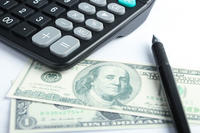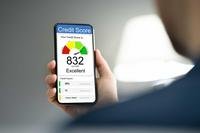What's in a Credit Card?
- Name. The full name of the account holder -- the person who is responsible for paying the credit bill each month.
- Issuer. The name of the company that is granting the credit and their logo. Issuers are usually banks and other financial institutions.
- Type of Card. VISA, MasterCard, Discover, etc.
- Account Number.
- First Six - Identify the issuer.
- Next four - Region/branch of issuer.
- Next five - Your account number.
- Final number - Digit for security.
- Customer Service Number. This number is available if you should have any questions about your account or past transactions. There is also a number for lost or stolen cards. Write it down.
- Magnetic Strip. This strip stores important information about your account such as name, account number, PIN, expiration date, and credit limit.
- Expiration Date. Merchants require this information if you're making a purchase by phone or the internet. It lists the date your card will expire in Month/Year. Most cards are valid for 1-3 years before they expire.
How does a Credit Card Work?
- Purchase. When you purchase something with a credit card (MasterCard in this example), the merchant first checks to see if the amount you've charged will be approved -- to make sure you haven't exceeded your credit limit. They do this by sliding your card through an electronic device that is connected to an approval network. Once accepted, you're given a printed receipt to sign. Both you and the merchant each keep a copy of the receipt.
- Merchant and bank. The merchant deposits the credit card receipt with their bank, which credits their account in the amount charged. The bank then sends this transaction electronically to MasterCard.
- MasterCard. MasterCard continues the transaction by crediting the bank and then charging the issuer of the card.
- Card Issuer. The issuer of the card completes the transaction cycle by sending a bill to the card holder for the purchase amount. Hopefully, the card holder pays the bill in full thus avoiding any interest or finance charges.
How are finance charges calculated?
If you expect to pay your balance over a extended period of time, you should understand how your creditor computes finance charges. New purchases accrue interest immediately and finance charges are actually added to your balance each month -- you're essentially paying interest on interest. This alone is a good reason to pay your balance in full each month. Let's take a look at a few balance computation methods:
Average Daily Balance. This is the most common method used by creditors. You are charged interest on the average amount you owed each day during the billing period (minus any credits made on a particular day during the cycle). Depending on your credit agreement, new purchases may or may not be added to the balance -- cash advances are usually included.Previous Balance. The creditor uses the outstanding balance from the previous billing cycle. Payments, credits, or new purchases are not included. This is the most expensive method.Adjusted Balance. This method is similiar to "previous balance" except that payments or credits received during the current billing cycle are subtracted from the previous outstanding balance. New purchases during the current cycle are not included. Adjusted Balance costs you the least.











